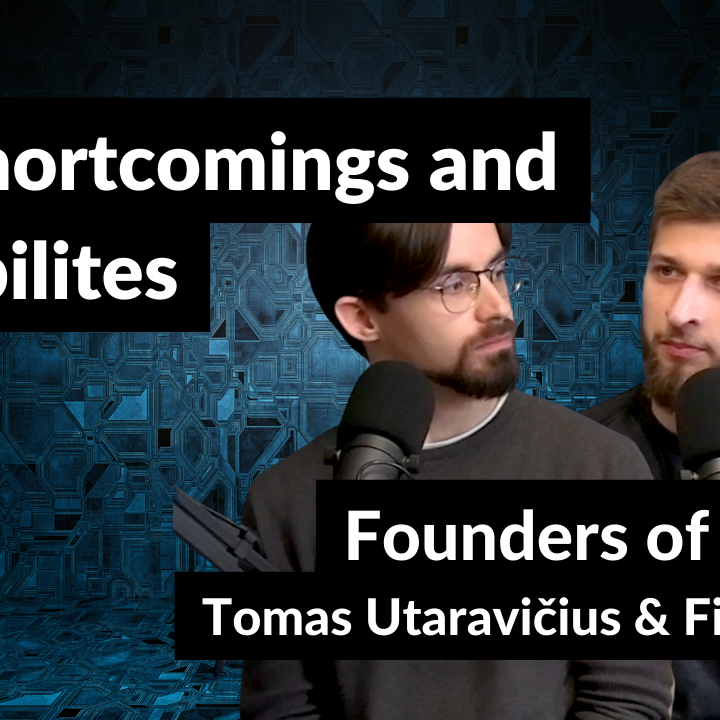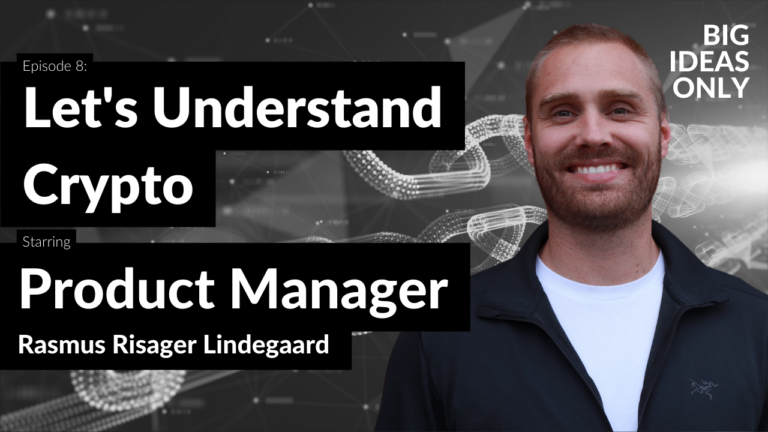If you Google it, you will get an endless list of articles that explain this widespread business-to-business phenomenon.
But why is it important?
This article touches upon everything you need to know about thought leadership as a B2B company – and more importantly how to become one easily and effectively.

If you haven’t already come across the B2B buzzword of the century, “thought leader”, you have probably been living under a rock.
But what is a thought leader?
To explain what a thought leader is, I am going to use two different quotes. The first is by Joel Kurtzman, Editor-in-Chief of the Strategy and Business magazine, who is credited with making the term popular in 1994, as quoted in Forbes:
“A thought leader is recognized by peers, customers and industry experts as someone who deeply understands the business they are in, the needs of their customers and the broader marketplace in which they operate. They have distinctly original ideas, unique points of view and new insights.”
The second quote is the definition of “thought leader” in the Cambridge Dictionary:
“An expert on a particular subject whose ideas and opinions influence other people, especially in business.”
By and large, the two quotes state the same thing: a thought leader is an expert in something within business, who sets the tone in that specific field by sharing their ideas and opinions.
But more importantly, an expert people are willing to listen to and trust.
Why Is Thought Leadership Important?
Let’s start by explaining the basics.
Why is thought leadership and pursuing a position as one important for B2B businesses?
Being positioned as a thought leader within a given field gives you a unique standing from which your advice will be sought after and trusted.
You will be the first person or company that springs to mind when someone encounters a problem that can be solved by someone within your field of expertise.
Word of mouth and recommendations are organic ways to get more customers, which is a natural side effect of being a thought leader. That doesn’t mean you shouldn’t invest in regular marketing and advertisements; it simply broadens your pool of potential clients significantly.
Part of being a thought leader is also to lead, not just contribute to, the conversation surrounding your field of expertise. This puts you in a very powerful position where you are able to focus on the things that matter or are interesting to you and get input from others on it.
However, you will not become a thought leader overnight. So be patient.
I usually say that you need to approach thought leadership with the mindset of running a marathon instead of a quick sprint.
Even though a thought leadership communicative strategy, may not show an immediate return on investments it is a strategy worth pursuing for long-term benefits.
Being positioned as a thought leader within a given field gives you a unique standing from which your advice will be sought after and trusted.
Recommended Reading
You will be the first person or company that springs to mind when someone encounters a problem that can be solved by someone within your field of expertise.
But what does it take to become a thought leader?
What Does It Take to Be a Thought Leader?
Several things are necessary to become a thought leader.
- You must be an expert in a field or a niche.
- Your knowledge has to be extensive on that topic.
- You have to have an ongoing involvement in and awareness of it, so you are constantly updated on the developments and trends within the field.
Having knowledge is not enough, though.
- You also need to have credibility; people need to know and trust that you are the expert, and that your advice is sound.
- In the same vein, you must have a supportive following.
- And naturally, none of the above materializes if you never share your knowledge. In becoming a thought leader, sharing is not caring. It’s business.
How Do You Gain a Supportive Following and Target Them Correctly?
To gain this supportive following, you need to know your audience: are you speaking to others in the field, business customers, or individual customers?
Based on this knowledge, you need to target your communication to the desired audience.
When you’ve clarified your audience next step is to work on your online presence: regular and continued activity on social media becomes the key to this. Don’t limit yourself by focusing on only one type of medium or platform. Use a variety of different content and platforms to reach your audience.
Of paramount importance is your ability to share your knowledge. If you want to be a thought leader, keeping your cards close will never gain you the credibility and the following needed to succeed. Knowledge is power and, if thought leadership status is your end goal, you need to be willing to share your knowledge freely and liberally without expecting any immediate return on it.
The Montanus Way to Thought Leadership: Become the Thought Leader of Tomorrow
One of the things that can be a struggle on the journey to becoming a thought leader is that it requires a near constant flow of quality content portraying the thought leader you are. This can be a resource drainer, as you either have to hire someone to produce that content or allocate time to do it yourself.
You need to be able to create coherent content for different forms of media that can be adapted to whichever platform you prefer.
In order to become an expert in producing quality content (specifically in the fields of science, technology, and engineering), you need to create content systematically and consistently, instead of whenever you have time in your calendar (which is never).
You need to lay the foundation for your upcoming “content universe” by creating or locating a piece of core content first. This can be an in-depth interview, a podcast, a lecture, a webinar, etc. given by one of the experts from your company. If you wish to make a person (rather than the company itself) the thought leader, it would be ideal that that person be in focus here.
If the core content has to be created from scratch (by doing a podcast episode or an interview, for example), you should always record it and, preferably, also videotape it. By doing so, you can create podcasts and short videos that are perfect for LinkedIn and other social media platforms.
Based on the core content, you are also able to write multiple articles that can be used on your corporate blog, ensuring a regular and varying flow of content to your audience. The best points and quotes from these blogposts can be configurated into multiple graphically set up social media posts.
In short, to become a thought leader in your specific field of expertise, you must make sure to produce a piece of core content and make sure it is used in the best possible way. In that way, you will be able to produce enough quality content to position yourself as a thought leader online.











